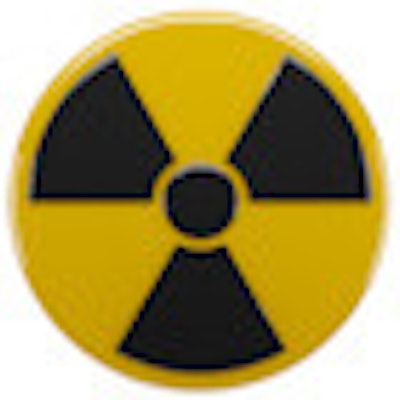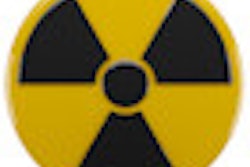
Dental cone-beam CT proponents are overhyping the technology and underplaying the radiation risks, according to an article in the November 22 New York Times.
"The cone beam's popularity has been fueled in part by misinformation about its safety and efficacy, some of it coming from dentists paid or sponsored by manufacturers to give speeches, seminars and continuing education classes, as well as by industry-sponsored magazines and conferences," the article states.
The Times article goes on to say that while cone-beam CT scans can help dentists deal with complex cases, "many experts in dental radiation have raised alarms about what they see as their indiscriminate use. They worry that with few guidelines or regulations, well-meaning orthodontists and other specialists are turning to a new technology they do not fully understand."
A series of Times articles in 2009 and 2010 -- written by investigative reporter Walt Bogdanich, co-author of the November 22 cone-beam CT article -- dealt with radiation exposure issues in medical imaging and radiation therapy.
In this case, the real issue is one of professional judgment, according to dental imaging experts -- including several quoted by the Times. Practitioners need to limit the amount of radiation a patient is exposed to while maximizing the diagnostic information, noted Allan Farman, BDS, MBA, PhD, DSc, president of the American Academy of Oral and Maxillofacial Radiology (AAOMR).
“The article presents what we think is an incomplete view of cone-beam CT technology.”
— Henrik Roos, president, Imaging
Sciences International
"They need to be aware that, even if they are told at a meeting that a cone-beam CT scan is equal in radiation dose to a single airport x-ray or ultrasound scan, it is three orders of magnitude wrong," Dr. Farman emphasized in an interview with DrBicuspid.com on the use of cone-beam CT in orthodontics. "And whether you are taking a periapical film or a cephalograph or a cone-beam CT scan, you need to use professional judgment on whether the image is warranted."
The New York Times article reflects only "routine" use of cone-beam CT in orthodontic patients where there is no specific evidence-based high-yield diagnostic rationale, he added. "We support the use of cone-beam CT for many clinical situations, most especially for dental implant planning and evaluation of dental impactions, as well as complex endodontic situations," Dr. Farman said.
Earlier this month, the AAOMR and the American Association of Endodontists issued a joint position statement on the use of cone-beam CT in endodontics, concluding that "this 3D imaging modality should only be used when the question for which imaging is required cannot be answered adequately by lower-dose conventional dental radiography or alternate imaging modalities." Similarly, the Health Protection Agency, the official adviser to the U.K. government on the health effects of radiation, recently published a radiation protection guidance for dental practitioners using cone-beam CT.
Stuart C. White, DDS, PhD, a professor at the University of California, Los Angeles School of Dentistry and chair of the school's oral radiology section, told DrBicuspid.com earlier this year that practitioners should be exposing patients only when there is a reasonable likelihood that the examination will yield information that will change the patient's diagnosis or treatment plan.
"Many orthodontic patients can seemingly be treated perfectly well without cone-beam CT examinations (and have been for many decades), although some patients certainly benefit -- hence the need for guidelines to identify those patients likely to benefit and those likely not to benefit," he said.
Vendors emphasize education
Despite comments in the Times article that "the cone-beam business is lucrative for manufacturers and dentists" and that "dentists, some of whom charge several hundred dollars per scan, can profit by owning their own machines," cone-beam CT vendors say they emphasize education and professional judgment with their customers.
Carestream Dental -- which holds regular educational events for dental practitioners on cone-beam CT, including a recent 3D symposium, "The Right Image for the Right Task: Managing Dose and Risk in CBCT Imaging" -- noted in a statement on its website that ionizing radiation should only be used when and where it is indicated.
"We recommend patients should always be informed of the potential risks, benefits and alternatives," the company website states. "Carestream Dental also advocates adherence to the ALARA (as low as reasonably achievable) principle, which dictates that every precaution should be taken to minimize radiation exposure."
John Sweeney, director of investor relations at Sirona Dental Systems, agreed.
"Sirona believes that the dental industry needs to adhere to the ALARA principle in limiting radiation dose and using it responsibly," he told DrBicuspid.com. "Cone-beam CT is a very good tool for surgical guides, implant planning, and other specialty applications. It offers considerable benefit in certain cases. But practitioners need to weigh the benefits against the potential risks."
The Times also missed some key technology advances, according to David Gane, vice president of dental imaging for Carestream. "The Times seems to have overlooked the current industry trend in dental cone-beam CT, which is the increased adoption of focused field, low-dose, high-resolution cone-beam CT in combination with digital panoramic and cephalometric modalities," he told DrBicuspid.com. "In addition, there is a recent and rapidly expanding body of peer-reviewed scientific research that shows the superior diagnostic and treatment planning benefits of focused field cone-beam CT. Benefits that can be obtained on behalf of the patient, often without increased risk. This was not reported."
Imaging Sciences International, which was singled out more than any other vendor in the Times article, issued its own response, which reads, in part:
The New York Times today published an article about cone-beam CT technology that included a number of references to the i-CAT and Imaging Sciences. The article presents what we think is an incomplete view of cone-beam CT technology and mischaracterizes the professional relationships that Imaging Sciences has with dentists. We support the AAOMR's initiative to develop guidelines for the use of cone-beam CT based on fact and within a professional, scientific framework.
In addition, the U.S. Food and Drug Administration (FDA) and Center for Devices and Radiological Health (CDRH) have announced their intention to develop guidance regarding these matters for 2011, Imaging Sciences noted.
The FDA has spent much of the last year focusing on the issue of medical radiation, after a number of U.S. hospitals reported that patients had received CT radiation overdoses.
In fact, prompted by Bogdanich's radiation exposure articles in the Times, the agency held a series of hearings in March 2010 to discuss ways to make CT brain perfusion scans safer, in particular by requiring scanner manufacturers to incorporate design changes into their products that enable radiology professionals to see how much dose has been delivered during a procedure. And earlier this month, the FDA concluded that the CT radiation overdose incidents were most likely not due to scanner malfunction, but rather improper use of the systems.
So far the FDA has not examined the potential radiation effects of cone-beam CT in dentistry, focusing instead on the issue of film speed as it relates to radiation exposure in traditional dental radiography. But this could change, according to Dick Thompson, a spokesperson in the CDRH.
"What was interesting in the CT scan issue was that the FDA did make some recommendations to help manufacturers develop devices in which users would be less likely to have overdoses," he told DrBicuspid.com. "If it [dental cone-beam CT radiation exposure] is a practice of medicine issue, we would not have authority. But it could be that FDA would suggest lower dose exposures to the manufacturers of these products."
Copyright © 2010 DrBicuspid.com



















